Using the compulsory
Park and Ride (where motorhomes can stay overnight for €5), we joined
the crowds to take the walkway through the rocks to the
viewpoints. After lunch we drove to the busy town of Bad
Schandau for some shopping in the Lidl, which was full of Czech
youngsters buying cheap booze, then across the river and back west to
Kurort - Rathen, where a large sign in many languages told us that
motorhomes are banned overnight, so we stayed at the most expensive
private stellplatz of the trip, at €16 including hookup and (biochem
only)
services, and no access to the river due to a busy railway line. The
next morning we drove along to the riverside carpark and took the
foot ferry across the river to the landing stage for a pleasant trip on
a vintage
paddle steamer to Pirna and back, (with a good discount on fares for
seniors).
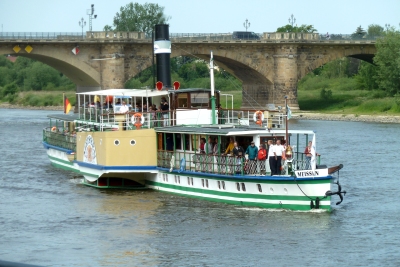
Elbe paddle steamer
We then drove on busy main roads
to Dresden, and fairly easily found the stellplatz, right in the
city centre thanks to the satnav. It is in a fenced in private carpark,
attended in the daytime, so felt safe (€14/24hours services extra). In the evening we took the
short walk across the Augustus bridge, dodging the speeding cyclists on
the pavements, to the city centre, and found the tourist office which
wasn't very good for information being more interested in taking hotel
and concert bookings. We eventually got a poor guide
leaflet and street map for 80 cents. We returned to the stellplatz along the banks of the Elbe as night time approached.
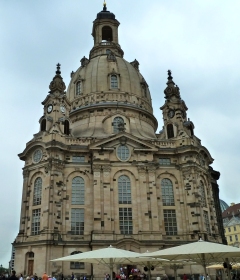
Dresden Frauenkirche
We strolled around the city centre the next morning, visiting the
main historic attractions, and walked a fair distance to the Wolkswagen
Phaeton factory in an impressive modern glass building. Entry is free
for viewing but guided tours of the remarkably clean assembly line are
extra. Returning to
the Altstadt, we visited the rebuilt Frauenkirche, re-opened in 2005
after
being flattened in WW2, as was most of the city centre. There is
still evidence of bomb damaged buildings. The baroque interior is
richly decorated with frescos, and gilt and marble columns which support
the dome. From there we walked to the baroque Zwinger
Palace, now a museum and art gallery with its tuneful Meissen porcelain
bells and clock (it's lucky how often we arrive at these
attractions at midday). Rebuilding work continues with the fountains
and statues around the Nympheum courtyard now restored.
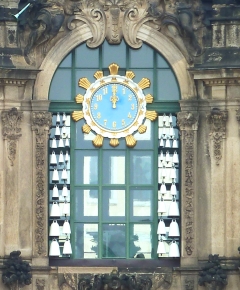
Zwinger Palace porcelain bells
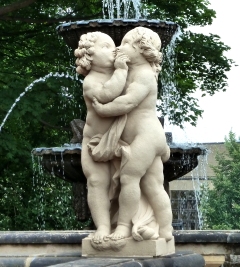
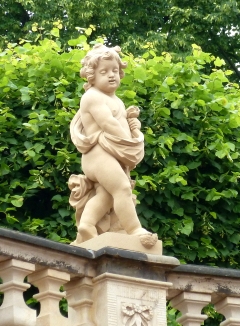
Nymph statues
After looking at the 100 metre long mural of the Fürstenzug,
comprising of 24,000 Meissen porcelain tiles, and the contrasting
mosaic "March of the Red Flag" created in 1969 but in fact not
installed on the Kulturpalast until 2001, we decided we had seen most
of the main sights and headed back to the
stellplatz, hoping to buy a British newspaper, but oddly didn't pass a
single newsagent or street kiosk. After lunch we had a couple of hours
before our 24 hour parking ticket expired, so we walked up the
quiet Königstrasse and back down the Hauptstrasse, where there
was an indoor market, smart shopping arcades and modern art
galleries, passing the gilt statue of Augustus II the Strong.
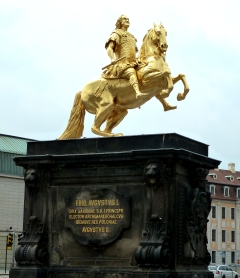
Augustus II the Strong